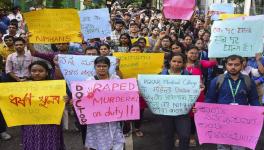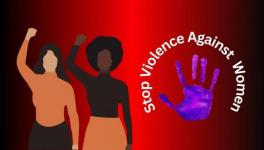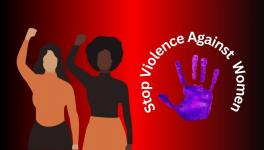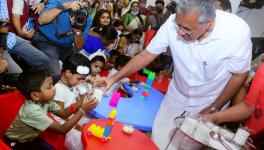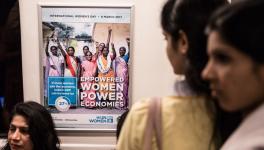Government Data Shows Condition of Women Saw no Significant Improvement over 5 Years
Data from the recently released National Family and Health Survey-5 shows that in the past five years, there has been no significant change in the percentage of women facing spousal violence, or in the percentage of women who faced violence during pregnancy. The economic condition of women has barely improved either.
The NFHS-5 data (for 2019-20), which has been released for 22 states and union territories, showed that on an average 20.21% of married women between the ages of 18 and 49 years have experienced spousal violence. Data has not been released for several places like Uttar Pradesh, Rajasthan, and the National Capital Territory of Delhi. Inclusion of their data could result in an even higher percentage.
According to the NFHS-4, which provided data for 2015-16, the percentage of women in the same age group from these 22 states and union territories, who had experienced spousal violence was 22.76%. The proportion of married women experiencing violence at the hands of their spouses has only dipped by about two percentage points.
The worst performing states in this regard were Karnataka, Bihar, Manipur, Telangana, and Assam, where a very significant number of women said they had experienced spousal violence. In Karnataka, the proportion of women who have faced spousal violence went up by a whopping 23.8%.
Among the states accounted for, Nagaland had the least number of women in the said age group who had experienced spousal violence, at 6.4%. It was followed by Himachal Pradesh (8.3%), Goa (8.3%), Jammu & Kashmir (9.6), and Kerala (9.9%). The states to have seen the highest dip in percentage between 2015-16 and 2019-20 were Manipur, Andhra Pradesh, and Meghalaya.
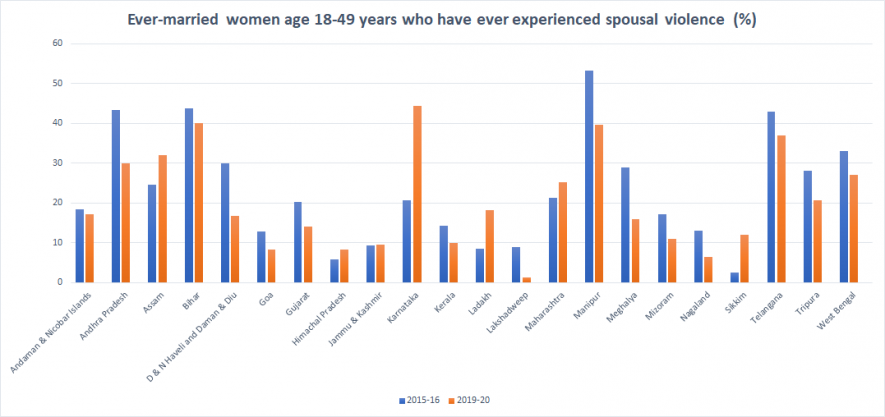
About 4.98% of young women between the ages of 18 and 29 years said that they had experienced sexual violence before turning 18. However, this number could be far from the reality, given that a large proportion of survivors of sexual abuse refuse to speak about it because of familial and societal pressure and the taboo that surrounds the issue.
NFHS-5 shows that the economic standing of women has declined severely in several states. Though the proportion of women having a bank or savings account that they themselves use increased by 21.42% — from 57.4% in 2015-16 to 78.83% in 2019-20 — the percentage of women owning a house and/or land, alone or jointly with others, decreased significantly in several states across the country.
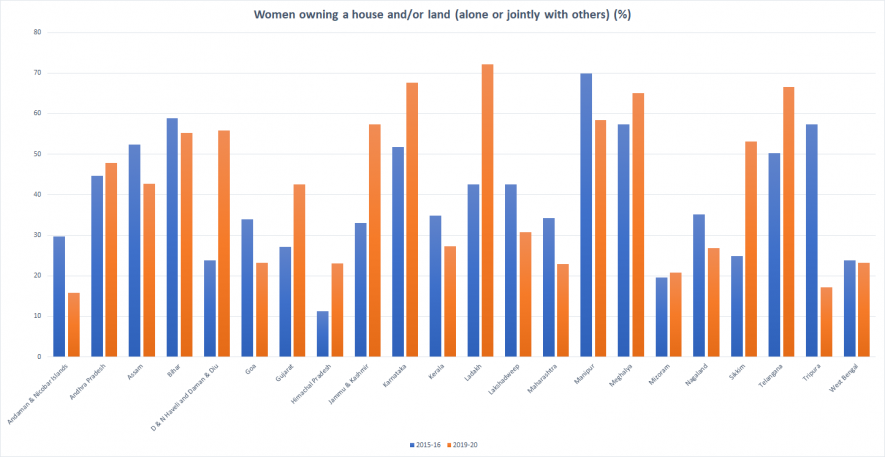
The worst performing state in this regard was Tripura, where only 17.2% of women surveyed owned a house or land. It was followed by Mizoram, Maharashtra, Himachal Pradesh, Goa, and West Bengal. In all these states, the percentage of women owning property was less than 25%.
The decrease in proportion was highest in Tripura, where the share of women owning property went down by 40.1% between 2015-26 and 2019-20, followed by Manipur, Maharashtra, and Goa.
The NFHS-5 data on the condition of women shows that while more and more women are participating in household decision-making, have access to better menstrual hygiene products and own mobile phones, the violence against them has barely decreased; they still do not have equal opportunities for economic freedom as men do.
Get the latest reports & analysis with people's perspective on Protests, movements & deep analytical videos, discussions of the current affairs in your Telegram app. Subscribe to NewsClick's Telegram channel & get Real-Time updates on stories, as they get published on our website.









